#codenewbies
Explore tagged Tumblr posts
Text

CSS Slideshow with Thumbnails
#html css slideshow#css slideshow#css slider#css slider with thu#css slider with thumbnail#html css#codenewbies#frontenddevelopment#html5 css3#css#css animation examples#css animation tutorial#pure css animation#code#webdesign
5 notes
·
View notes
Text
Day 4 (10-11-23)
Today I wasn't sure I wanted to code. More accurately, I had a great idea for a dinner I could make with pantry stuff and frozen leftovers and wanted to do that instead. I decided I would code for 10 or 15 minutes, then make dinner. It has been about an hour.
I started back on the accessibility lesson, and so much of what I was learning seemed applicable to the color palette page I started on yesterday. I started writing down more and more properties and tags to remember, until eventually I just had to make some adjustments to the page.
It took a little time, but overall I feel that the structure of the page makes much more sense and I am happy with that. I will finish the accessibility lesson later but I won't force myself to focus in a purely linear fashion. I think allowing myself to fixate on my side project will help me feel enthusiastic about coding in general. I figure if I can feel the same way about coding as I feel about Stardew Valley, cooking, and paleontology, then I'll end up absorbing every bit of information I can find and actually retain it. Working with my brain instead of against it seems like a good idea.
The pantry-freezer dinner, if anyone was wondering, will be carnitas taquitos with a creamy dipping sauce, mexican rice cooked in bone broth made from scraps, and iced tea :)
#adhd focus#accountability#adhd support#coding#learning with adhd#learning through play#codenewbies#html css#css#html#freecodecamp
15 notes
·
View notes
Text
Is C++ Good for Full-Stack Development?
Which programming languages are necessary for your path as a full-stack developer may be on your mind if you’re just starting out with coding. It can be difficult to have so many languages to pick from. You may wonder, “Is C++ good for full-stack development?” among the various possibilities. read more

#CPlusPlus#FullStackDevelopment#TechStack#WebDevelopment#ProgrammingLanguages#SoftwareDevelopment#CPlusPlusDevelopment#CodeNewbies
0 notes
Text

Full stack development combines front-end and back-end expertise to build complete, dynamic web applications from scratch. It’s a skillset that bridges design with robust functionality, offering end-to-end solutions for modern digital needs.
#FullStackDevelopment#WebDevelopment#Frontend#Backend#Programming#CodingLife#TechSkills#WebDesign#SoftwareDevelopment#AppDevelopment#DevLife#CodeNewbies#TechCareers#FullStackEngineer#WebApp#DeveloperTools
0 notes
Text

Day 19 — 21/ 100 Days of Code
✧˖° ♡ progress update
I started the JS Functions chapter, and things are getting so much more interesting. I thought by now I would have finished all the simple function exercises that I found on W3Resources, but it seems I still have much work to do to improve my problem-solving skills.
I always try to find the answer on my own and check the solution only after I hit a wall. My approach is to start by:
Defining the task that I want to achieve.
Making a flowchart and designing the steps that the computer will perform.
And lastly, coding each step.
Even though sometimes the process can be tedious, the feeling you get after you press enter and it runs with no issues is surreal. Is this how you all have been feeling when coding ( ⸝⸝´꒳`⸝⸝)
#learning#coding#webdevelopment#codeblr#studyblr#growing#imporving#self improvement#cs#computer science#programming#codenewbie#tech#learn to code#frontend#100daysofcode#coding blog#htlm#css#JavaScript#problem solving
168 notes
·
View notes
Text
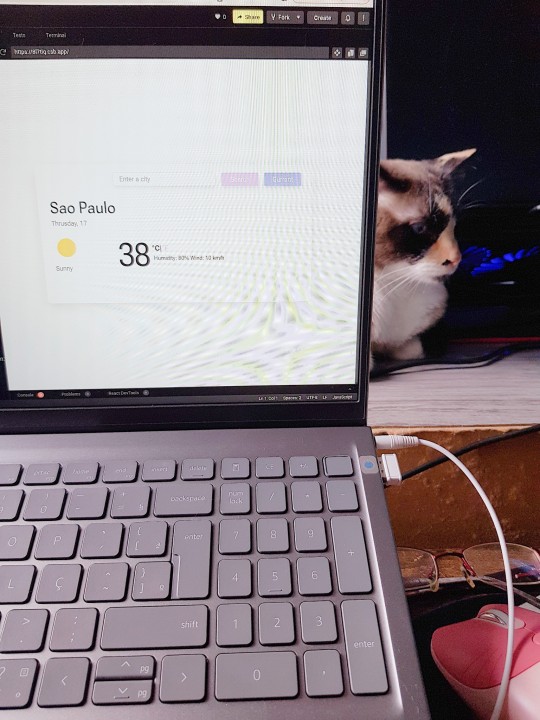

another day, another cat
today i finished the homework for week 1 of the react course and i had to "recode" the weather app into react components and it was pretty cool.
have a good weekend!
#codeblr#programming#web development#codenewbie#studyblr#coding#webdev#progblr#shecodes#reactjs#react#mine
48 notes
·
View notes
Text

Python, Java, or C++? Discover the key differences and strengths of these popular programming languages in this visual guide. Learn which language is best suited for beginners based on syntax, speed, and career goals.
#Programming#Python#Java#Cplusplus#Coding#LearnToCode#ProgrammingForBeginners#Tech#CodeNewbie#SoftwareDevelopment#TCCI Computer Coaching
3 notes
·
View notes
Text


The third HTML, CSS and BOOTSTRAP (intermediate) project CH#03 Contact-Us-page(06) 's snapshots. The source code is available on: github
#HTML#CSS#Bootstrap#WebDevelopment#Coding#WebDesign#FrontEndDevelopment#Programming#Developer#CodingLife#IntermediateProject#CodingJourney#LearnToCode#WebDevCommunity#CodeNewbie#100DaysOfCode#JavaScript#Tech#TechCommunity#WebDeveloper
7 notes
·
View notes
Text
Curious about when to use display: flex or display: inline-flex?
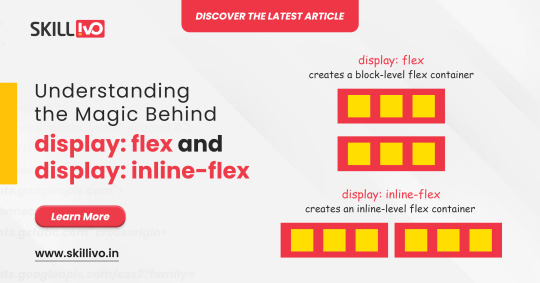
display: flex turns your element into a block-level flex container, giving you full control over its child elements' alignment and spacing. Perfect for structuring complex layouts! 🏗️
On the other hand, display: inline-flex gives you the same flex properties but maintains the container as an inline element. Ideal for inline-level layouts where you need the magic of flex without breaking the flow! 💫
Read Article- Click Here
Follow-
LinkedIn- Skillivo
#WebDevelopment#CSS#Flexbox#Coding#Frontend#WebDesign#Programming#CodeNewbie#LearnToCode#TechTips#Skillivo#ProgrammingTips#InlineFlex
3 notes
·
View notes
Text
Front-End Development: Building the Interface of the Future
Front-end development is at the heart of creating user-friendly and visually appealing websites. It involves translating designs into code and ensuring that web applications are responsive and interactive. In this article, we explore the key aspects of front-end development, essential skills, and emerging trends in the field.
What is Front-End Development?
Front-end development focuses on the user interface (UI) and user experience (UX) aspects of web development. It involves creating the part of the website that users see and interact with, using a combination of HTML, CSS, and JavaScript.
Core Technologies
HTML (HyperText Markup Language): HTML is the foundation of web pages, defining the structure and content, such as headings, paragraphs, and images.
CSS (Cascading Style Sheets): CSS is used to style and layout web pages, controlling aspects like colors, fonts, and spacing to create an attractive and consistent look.
JavaScript: JavaScript adds interactivity and dynamic content to web pages, enabling features like form validation, animations, and user input handling.
Popular Frameworks and Libraries
React: A JavaScript library for building fast and dynamic user interfaces, particularly single-page applications.
Angular: A comprehensive framework for building large-scale applications with a structured and modular approach.
Vue.js: A flexible framework that is easy to integrate into projects and focuses on the view layer of applications.
The Role of a Front-End Developer
Turning Designs into Code
Front-end developers take designs created by UI/UX designers and turn them into code. This involves creating HTML for structure, CSS for styling, and JavaScript for functionality, ensuring the design is faithfully implemented and functional across various devices and browsers.
Ensuring Responsiveness
With the growing use of mobile devices, it’s crucial that websites work well on screens of all sizes. Front-end developers ensure that web applications are responsive, meaning they adapt smoothly to different screen resolutions and orientations.
Optimizing Performance
Performance optimization is key in front-end development. Developers reduce file sizes, minimize load times, and implement lazy loading for images and videos to enhance the user experience.
Maintaining Cross-Browser Compatibility
A successful front-end developer ensures that web applications work consistently across different browsers. This involves testing and resolving compatibility issues to provide a uniform experience.
Implementing Accessibility
Making web content accessible to people with disabilities is a critical aspect of front-end development. Developers adhere to accessibility standards and best practices to ensure that everyone can use the website effectively.
Essential Skills for Front-End Developers
Mastery of Core Technologies
Proficiency in HTML, CSS, and JavaScript is fundamental. Front-end developers must be able to write clean, efficient code that is both maintainable and scalable.
Familiarity with Modern Frameworks
Knowledge of modern frameworks like React, Angular, and Vue.js is crucial for building contemporary web applications. These tools facilitate the creation of complex, dynamic interfaces.
Version Control with Git
Version control systems like Git are essential for tracking changes in the codebase and collaborating with other developers. Mastery of Git allows for efficient project management and collaboration.
Understanding of UX/UI Design
An understanding of UX/UI principles helps developers create user-friendly and aesthetically pleasing interfaces. This includes knowledge of user behavior, usability testing, and design basics.
Problem-Solving and Debugging
Front-end development often involves troubleshooting issues related to layout, functionality, and performance. Strong problem-solving skills are essential to identify and resolve these challenges efficiently.
Emerging Trends in Front-End Development
Progressive Web Apps (PWAs)
PWAs combine the best features of web and mobile applications, offering fast loading times, offline capabilities, and push notifications. They provide a native app-like experience within the browser.
WebAssembly
WebAssembly allows developers to run high-performance code in web browsers. It enables complex applications like games and video editors to run efficiently on the web, expanding the possibilities of front-end development.
Server-Side Rendering (SSR)
Server-side rendering improves the loading speed of web pages and enhances SEO. Frameworks like Next.js (for React) facilitate SSR, making it easier to build fast and search-friendly applications.
Single Page Applications (SPAs)
SPAs load a single HTML page and dynamically update the content as users interact with the application. This approach provides a smoother user experience, similar to that of a desktop application.
Component-Based Development
Modern frameworks emphasize component-based architecture, where UI elements are built as reusable components. This modular approach enhances maintainability and scalability.
AI and Machine Learning Integration
Integrating AI and machine learning into front-end development enables the creation of smarter, more personalized applications. Features like chatbots, recommendation engines, and voice recognition can significantly enhance user engagement.
#FrontEndDevelopment#WebDevelopment#UIUXDesign#HTML#CSS#JavaScript#ReactJS#Angular#VueJS#ResponsiveDesign#WebDesign#UserExperience#WebPerformance#WebAccessibility#SinglePageApplication#ProgressiveWebApp#WebDevelopmentTrends#ModernWebDev#FrontendFrameworks#CodeNewbie#LearnToCode#WebDevCommunity#CodingLife#TechTrends#WebComponents#WebAssembly#ServerSideRendering#DigitalDesign#UIComponents#WebOptimization
3 notes
·
View notes
Text

Text Typing Effect
#text typing effect#css text animation#pure css animation#html5 css3#html css#codenewbies#css animation examples#css animation tutorial#css#frontenddevelopment
6 notes
·
View notes
Text
What is a Front-End Developer?
Front-End Development is the process of creating the visible part of a website or web app that users interact with directly in their browser. It involves building layout, design, and interactivity using the following core technologies:
HTML (HyperText Markup Language): Defines the structure of web pages.
CSS (Cascading Style Sheets): Styles and formats the content (colors, layout, fonts).
JavaScript: Adds dynamic behavior and interactivity (e.g., sliders, forms, menus).
Front-end developers focus on user experience (UX), responsive design (mobile-friendly), and ensuring websites work across different browsers and devices.
HTML – Structure of webpages
CSS – Styling and layouts
JavaScript – Interactivity and logic
Responsive Design – Mobile-first layouts
Version Control (Git & GitHub) – Code tracking
Basic SEO Principles – How front-end affects search visibility
Optional: CSS Frameworks – Like Bootstrap or Tailwind
Optional: JavaScript Libraries – Like React (for later stages)

#FrontEndDevelopment#WebDevelopment#FrontendDeveloper#LearnToCode#WebDesign#CodeNewbie#DevCommunity#HTML#CSS#JavaScript
0 notes
Text
Day 3 (10-10-23)
Today I got distracted. Like, really distracted. But I did code.
I started the accessibility lesson on freeCodeCamp, and one of the steps linked to the style guide for their website. I like their color palette, I thought. I should make a master palette to easily theme my future projects. It won't take long.
I ended up spending a long time picking colors, then several hours building a style guide page. I originally planned on making a 5 color palette, maybe? I honestly cannot be bothered to describe what I disliked about every palette maker I tried. All you need to know is that it wasn't exactly what I wanted, so now I have a PAGE. I accidentally deleted a pretty important chunk of it just now. This filled me with anguish and blinding rage, so consequently I have decided to call it a night.
As frustrated as I am right now, I'm glad that I've been able to be consistent so far even though my ADHD is not being managed by medication. I'm doing it! The page looks decent, and every failure is a chance to learn. I'm trying to remember that.
Anyway I'm gonna stretch out my back, eat a snack, and go to bed.
#codenewbies#learning with adhd#accountability#adhd focus#adhd support#coding#learning#keeping myself accountable#html#html css#css#freecodecamp
3 notes
·
View notes
Text
Will OpenAI Codex, The AI Coding Agent, Replace Software Engineers?
Introduction: The Rise of AI in Software Development
Artificial Intelligence (AI) is currently the most disruptive technology in tech, and OpenAI Codex, the powerful AI coding agent, is at the forefront. Built on the same tech powering ChatGPT, Codex can write code, build applications, and automate mundane programming tasks. But the question on every programmer's mind is: Can OpenAI Codex substitute for software engineers?
Let's dive deep into this groundbreaking tech and explore its impact on software engineering careers.
What Is OpenAI Codex?
OpenAI Codex is a powerful AI model that has been trained on billions of lines of public code in repositories like GitHub. It is able to read natural language and translate it into working code in various programming languages, such as Python, JavaScript, Java, and more. From developing simple scripts to generating full-fledged apps, Codex acts like an amplified coding assistant.
Major Features:
Autocompletes code according to context
Translates plain English into working code
Generates boilerplate and redundant code skeletons
Builds websites, games, and even APIs from scratch
Will Codex Replace Software Engineers?
Short answer: No way. But it will radically change the way developers develop.
1. Automation of Repetitive Work Codex excels at automating boring tasks like generating test cases, boilerplate code, and API wrapping. This frees engineers to focus on higher-level logic and design decisions.
2. Prototyping and MVP Creation Much Faster Startups and small teams can use Codex to speed up prototyping. It allows solo founders or junior engineers to make things happen without needing a big engineering organization.
3. Skill Enhancement, Not Replacement For experienced developers, Codex is an accelerator, not a replacement. It's a syntax assistant that suggests better code patterns, even for debugging—it's like having a live pair programmer.
Limitations of Codex: Why Human Engineers Still Matter
Despite its prowess, Codex has major flaws:
Does Not Understand Deep Context: It cannot fully grasp business logic or domain complexity.
Error-Prone for Hard Cases: Codex can produce buggy or vulnerable code without human oversight.
No Architectural Choices: AI is still not capable of writing scalable systems or trade-offs in architectural design.
Software development isn't all about writing code—it's about solving problems, collaborating with others, and releasing maintainable, secure code. AI can't replace those qualities of human-ness, at least not today.
The Future: Human-AI Partnership in Software Engineering
Rather than replacing jobs, OpenAI Codex will redefine them. What software engineers do will shift from being code writers to AI-powered problem solvers. Developers will need to adapt, learning how to operate in concert with AI tools.
Just like calculators did not render mathematicians redundant, Codex will not render software engineers redundant. It will, however, become the essential tool for every developer.
Conclusion: Adapt, Don't Fear OpenAI Codex is a gigantic leap forward in development by AI, but it's not a killer project—because it's a game-changer. Codex offers excellent opportunities to get smarter and faster for those willing to evolve with the technology. The future isn't about AI vs engineers—but AI and engineers working together to build the future.
#OpenAICodex#AIinSoftwareDevelopment#ArtificialIntelligence#AItools#MachineLearning#CodingWithAI#AIProgramming#CodexAI#GitHubCopilot#AIEngineer#SoftwareEngineering#SoftwareDeveloper#WebDevelopment#FullStackDevelopment#DevTools#CodeNewbie#ProgrammerLife#DeveloperCommunity#100DaysOfCode#CodingLife
0 notes
Text

Day 22 — 29/ 100 Days of Code
✧˖° ♡ progress update
Kept learning more about functions and things are getting slightly more complex, i'm allowing myself to progress at slow pace and take the time to grasp everything by doing enough practice before jumping to the next lesson.
I also made a page in notion for my Javascript notes, idk why i thought using text doc to take notes was a good idea, notion is being a game changer honestly!

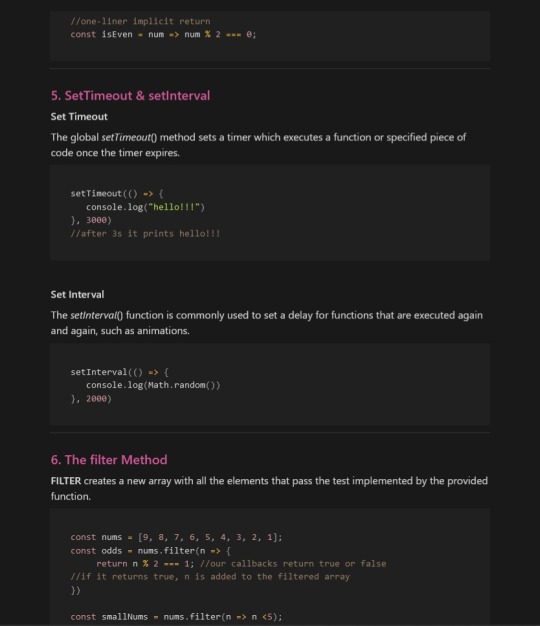
#learning#coding#webdevelopment#codeblr#studyblr#growing#imporving#self improvement#cs#computer science#programming#codenewbie#tech#learn to code#frontend#100daysofcode#coding blog#htlm#css#JavaScript#problem solving
137 notes
·
View notes
Text

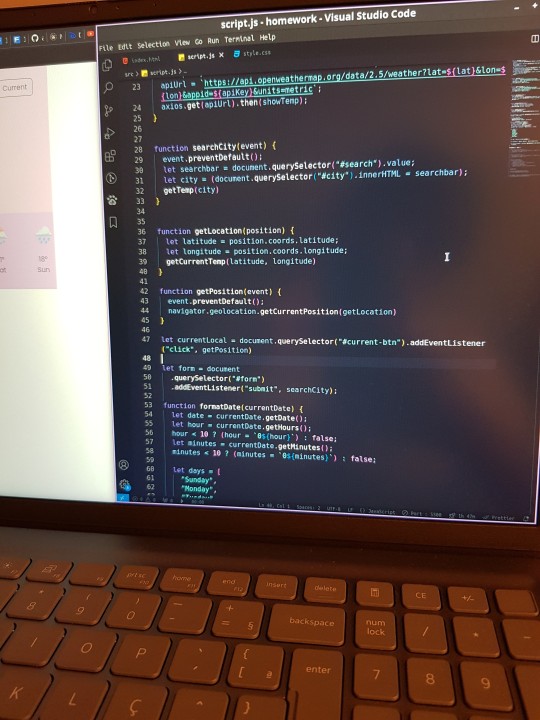
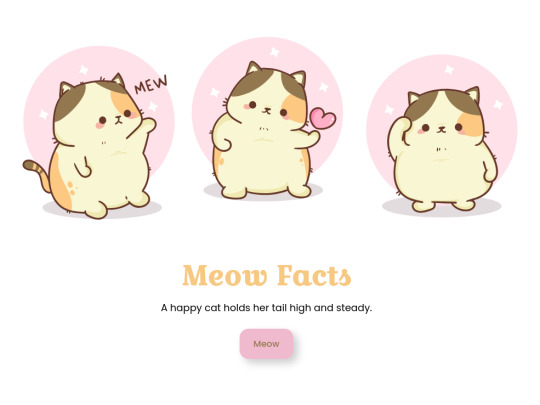

03/10/23
i finished shecodes week 5 homework, and now the app we're building has real-time temperature, as well as description of temperature, humidity and wind! you can search the city or you can get temperature of your current location!! this is really cool!
learning about api has being really exciting, so i made a simple page using meow-facts api where you click meow to get facts about cats, you can check the repository and the live page!
really excited to learn more about api!
ps: this sakura chocolate is the cutest thing! i almost didn't eat it 🥺
49 notes
·
View notes